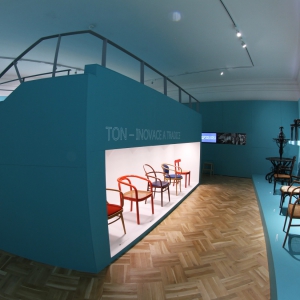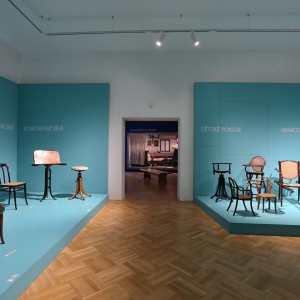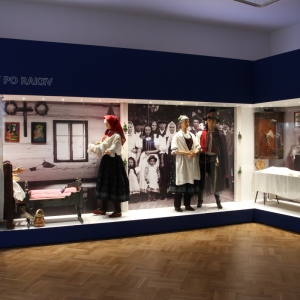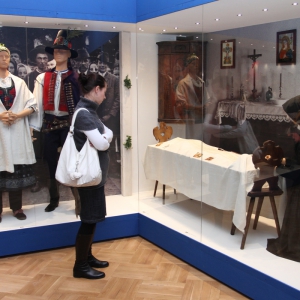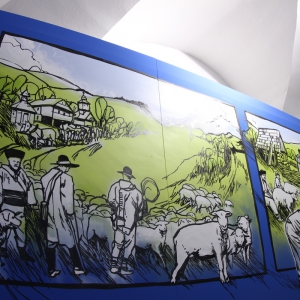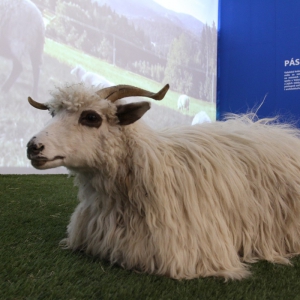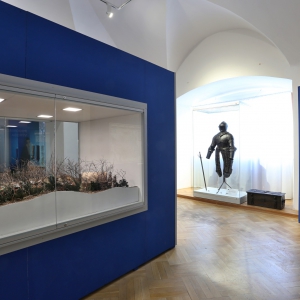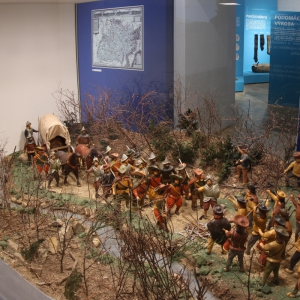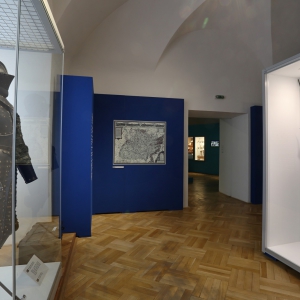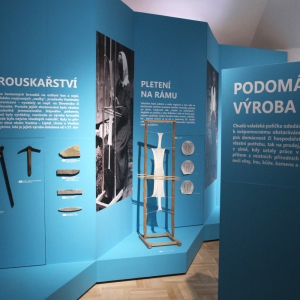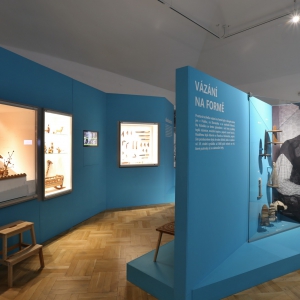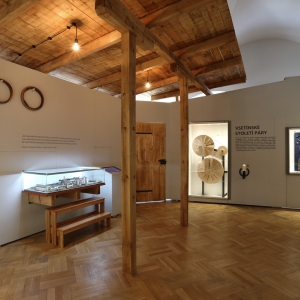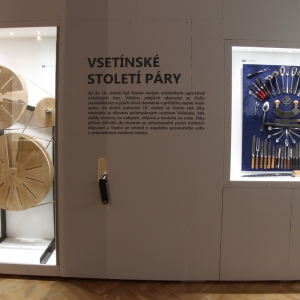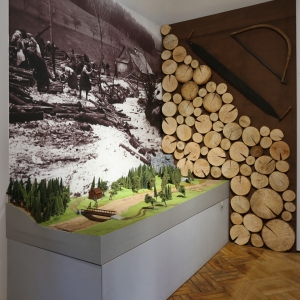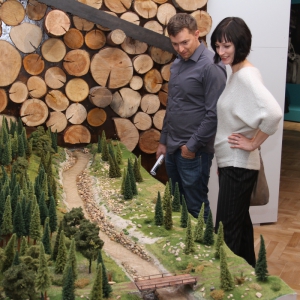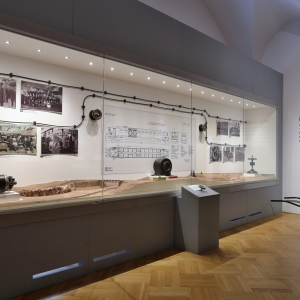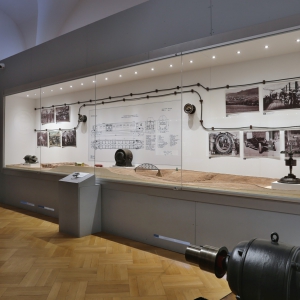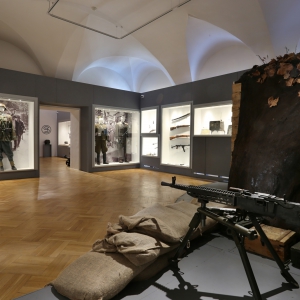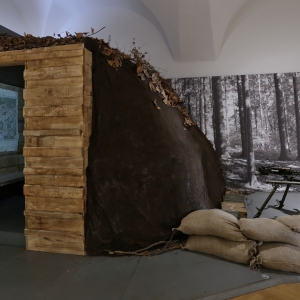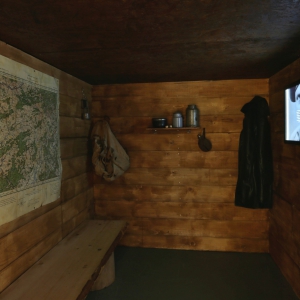
Bentwood Furniture
This exhibition presents a selection of bentwood furniture from our unique collection and from TON, a famous bentwood manufacturer located in Bystřice pod Hostýnem. TON loaned us pieces both from their archive and from their shop, which sells their latest products. You can see 52 objects on display: the oldest is a so-called Boppard Chair from the 1830s and the newest is a design chair called Split from 2015. The exhibition documents the production of bentwood furniture, which took place in Vsetín for longer than 60 years before the Great Depression in 1932. Three different companies - Thonet Brothers, J&J Kohn, Thonet-Mundus - have operated in this town. In the first room you can see furniture for special purposes and the other room shows sitting furniture as it varied throughout the times and with different makers.
Wallachian Folklore - Annual and Family Traditions
This ethnographic exhibition describes traditional customs related to the seasons of the year and to different stages of human life. Rare objects from our collections, old photographs and films illustrate seasonal rituals – FROM SPRING TO WINTER (Lent to Easter) and FROM CRADLE TO CASKET familial rituals (birth, wedding and death)
Sheepherding in Wallachia (about Wallachian Colonization and sheepherding)
Wallachian Colonization along with Shepherds' Colonization shaped the local region and its unique ethnographic character for centuries to come. This exhibition seeks to present the process of colonization and mountain sheepherding life as well as the way it formed the unique landscape in the region.
Troubled Times (anti-Habsburg rebellions and banditry)
After the defeat of Czech estates by the imperial forces in 1620, Wallachia remained the only region in the Czech lands to continue armed fighting against the Habsburg rule and the Counter-Reformation they pushed. Vsetín was the centre of the resistance, thus making its mark in national history. This exhibition depicts the history of the uprisings and the evolving bandit culture, which spread as a result. Local bandits, known as zbojníci, became an essential part of the oral tradition through folk songs and legends.
Cottage Industry (unique local home crafts)
The exhibition "Cottage industries in Wallachia" uses historical photographs, documentary films and rare artefacts to describe the traditional trades that were unique to the region and made Wallachia famous far beyond its borders. They include whetstone making, knitting on a frame and the production of jackknives (folding knives), toys and wool stockings.
The Century of Steam in Vsetín
(about the industrial revolution in Vsetín in the second half of the 19th century)
In the second half of the 19th century Vsetín turned from a sleepy agricultural town into a modern industrial city with a booming wood business. Large quantities of timber in the forests around Vsetín began to be exploited for economic purposes, enabling a rapid growth of wood industry. The exhibit shows the largest factories operating in Vsetín in the 19th century and the impact this development had on the character of the city and the surrounding landscape.
The Edison of Moravia (about Josef Sousedík)
Josef Sousedík was the most eminent personage of Vsetín in the 20th century. He was an internationally acclaimed inventor, an entrepreneur, a politician and a true patriot. He contributed to building Zbrojovka and played an active part in the anti-Nazi resistance. This exhibition presents the life of Josef Sousedík and his contributions to the development of the city. It also shows the history of MEZ and Zbrojovka, an engineering plant and an arms factory, which have been the movers and shakers of the city industry for almost a century.
Partisans in the Hills of Wallachia (about the resistance movements during the Protectorate and the WWII)
In the course of the Second World War, the Vsetín region became the center of armed resistance against the Nazis in Bohemia and Moravia. Regardless of the risk, some of the locals joined the resistance or helped partisans in other ways. The exhibition shows the history of the resistance in the region and the effects it had on the life of the population.
